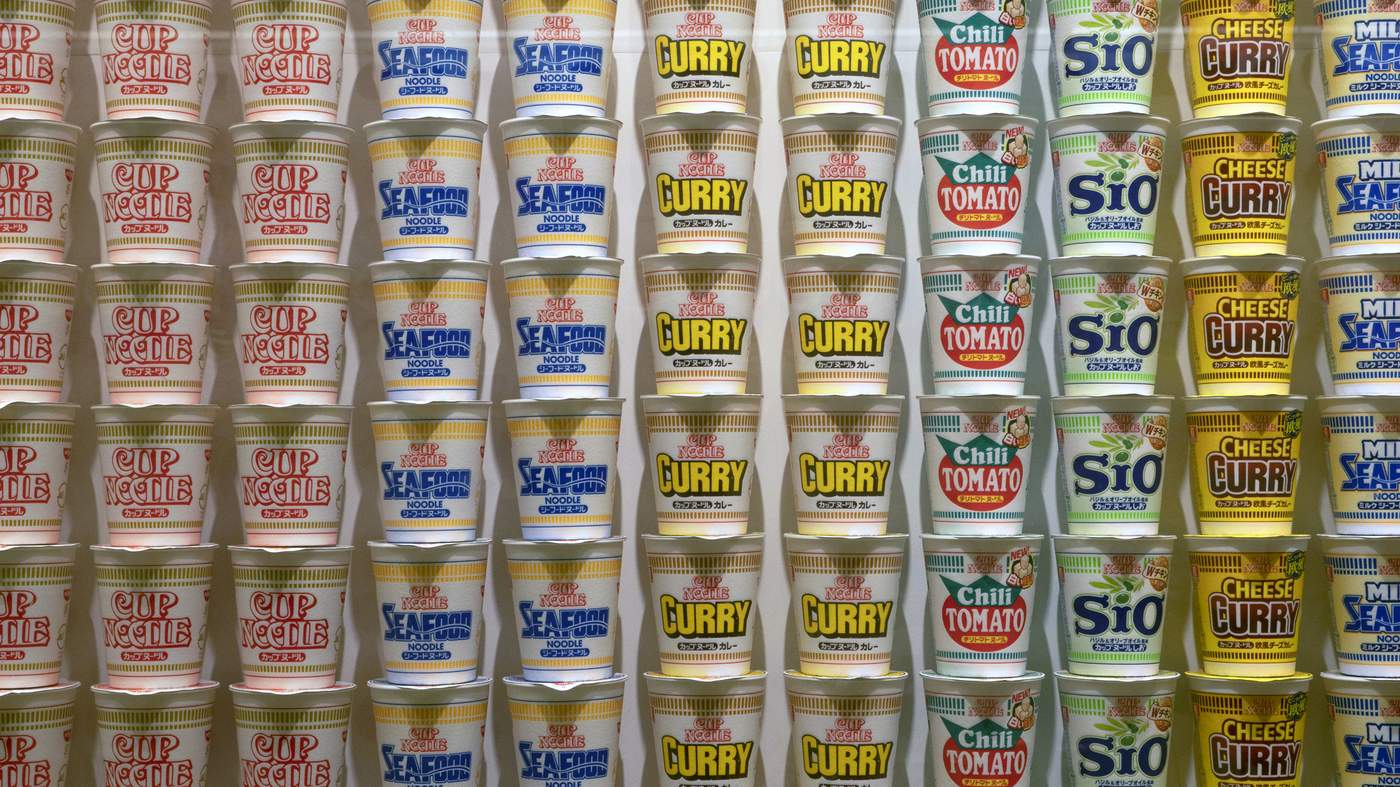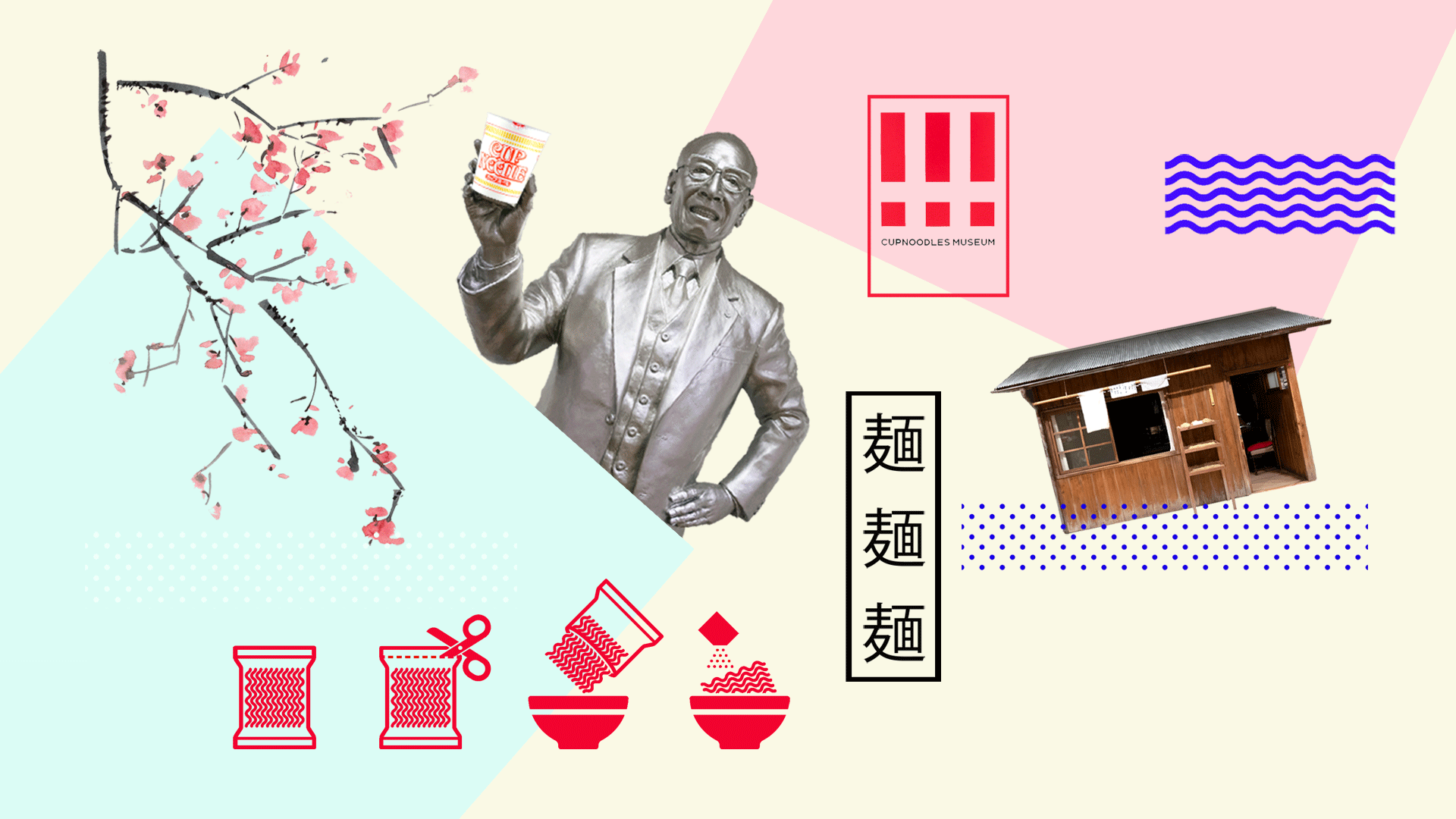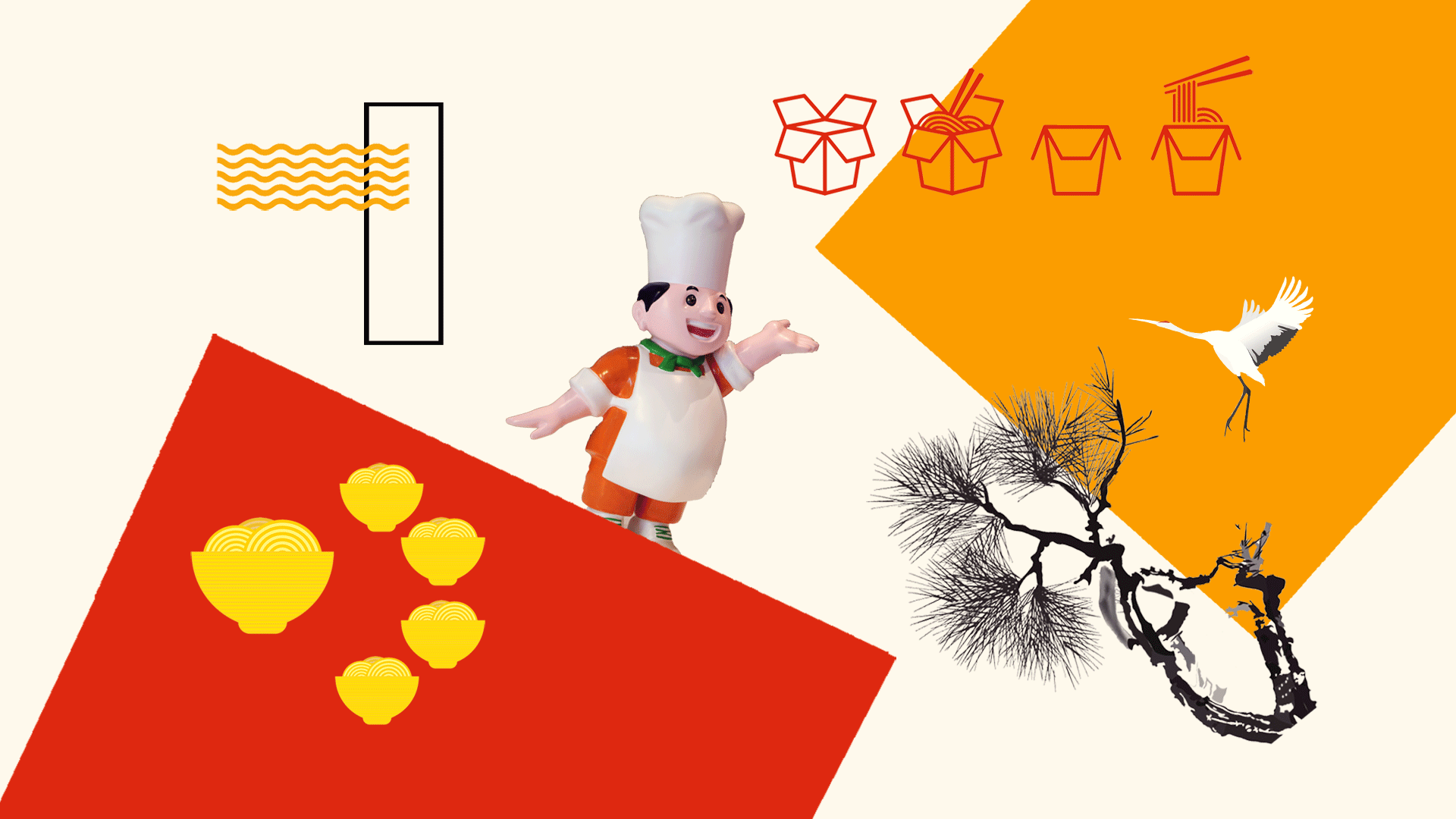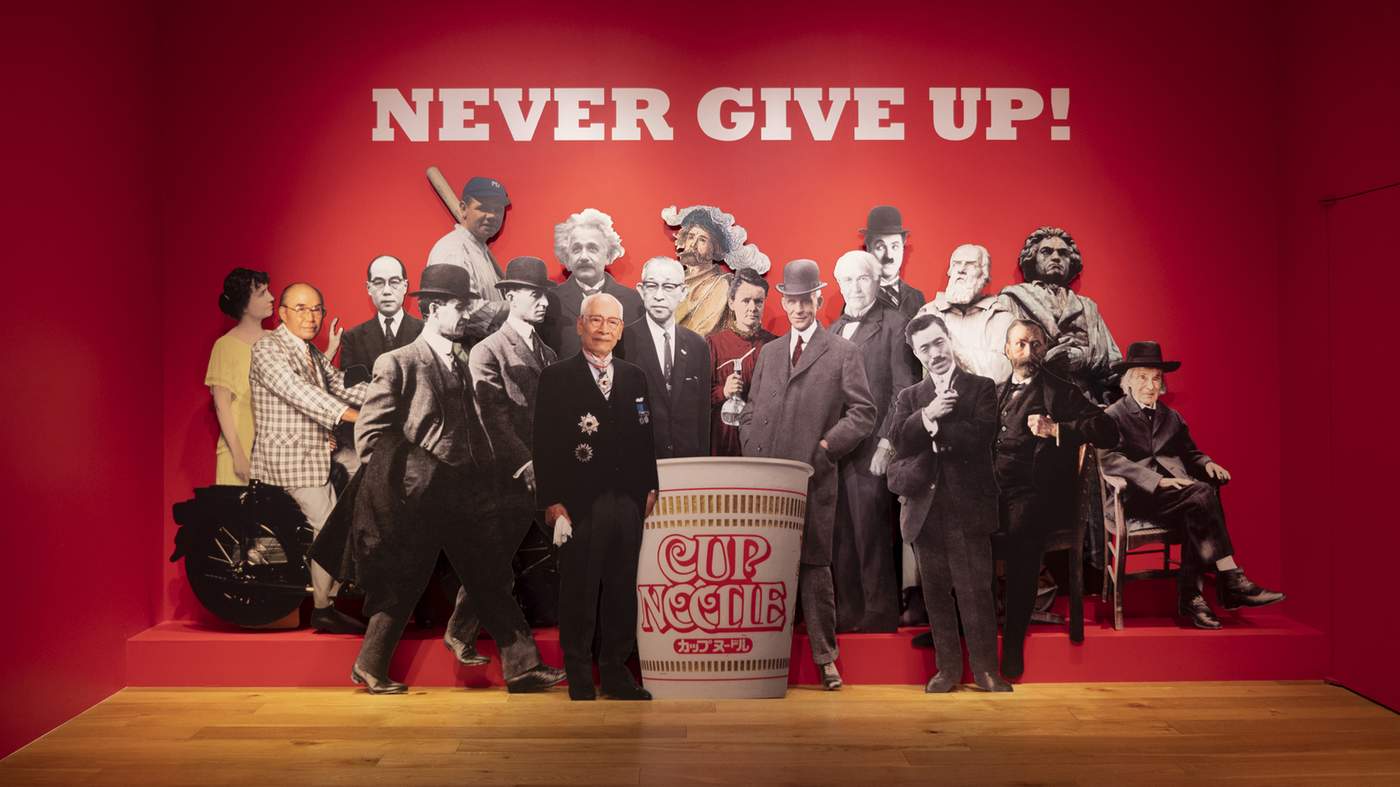At the age of 12, Coss Marte began dealing drugs in New York City. At 15, he was sent to prison for a year. That’s when he began to learn how things worked behind bars.
“This guy next to me was serving 12 years,” says Coss. “We started cooking together.”
That was the first of three stints in prison - including New York’s famously brutal Rikers Island prison. Each time, Coss existed on “prison burritos”, a regular makeshift snack for US inmates.
“Instant noodles, potato chips, Cheezits. If you get lucky, you steal an onion from the mess hall,” he says. “You shuffle it up, you throw in a little bit of ketchup, mayonnaise maybe. I’ve had people tell me it tastes like Taco Bell.”
Basic instant noodles are the cheapest thing on sale in most prison stores, where three packs cost about a dollar. They’ve replaced cigarettes as the most traded item inside American prisons. They’re so important, inmates use them as money.
As Coss was learning the ropes in prison, another young man living on the other side of the globe was also figuring out how to rely on instant noodles. Back in 2004, Kieran “Danger” Dooley was 20 years old and training to be a teacher in Dunedin, in southern New Zealand. But he was harbouring a dream to be a movie director. And one night he saw a film that gave him an idea.
“It was Supersize Me,” he says. “I latched on to it and I thought, ‘Well, you know, old Morgan Spurlock, he’s a bit of a legend as far as I’m concerned.’ And I thought I’ll make the sacrifice. I can give this a shot too.”
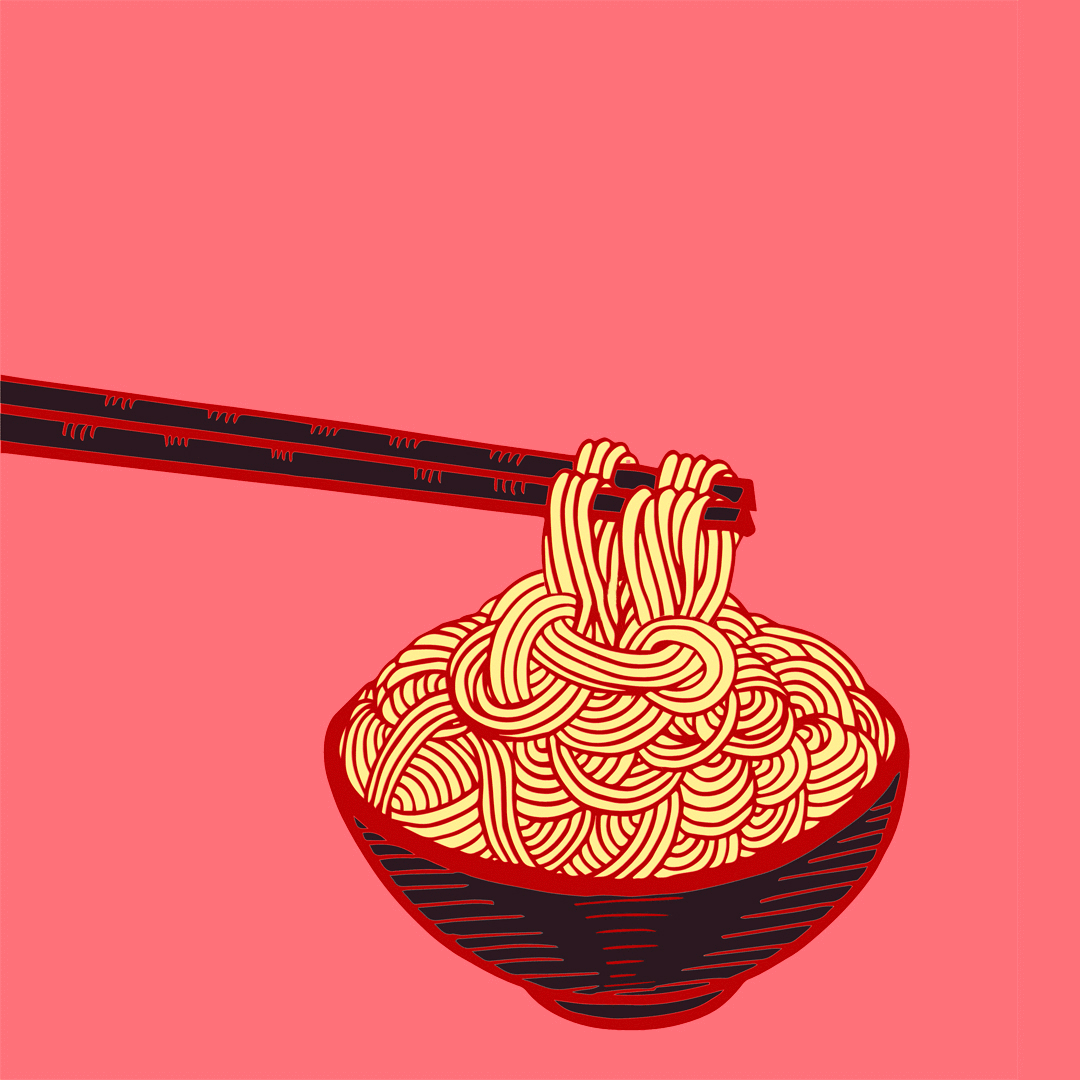
In his documentary, Morgan Spurlock eats nothing but McDonald’s for a month. He records the drastic physical and psychological impact it has on him. Danger Dooley chose the obvious student equivalent with his student film, Noodle Me.

Listen to The Eternal Life of the Instant Noodle, from BBC Radio 4, on the BBC iPlayer.

“I couldn’t really afford McDonald’s every day or Kentucky Fried Chicken or Burger King or whatever,” he says. Instant noodles were an inevitable choice. Sixty years after their invention, they have become the default food for anyone short on money, or time, or a kitchen. They even pop up in disaster zones and on long-haul flights.
Last year, across the globe, more than 100 billion servings of instant noodles were eaten. That’s more than 13 servings for every person on the planet.
In the birthplace of instant noodles, Japan, they’ve been voted - repeatedly - Japan’s most successful invention, ahead of high-speed trains, laptops and karaoke.
Instant noodle sales have certainly fallen in Japan since the invention’s heyday in the 1970s and 80s, and now occupy around 5% of all global sales. But don’t let that number fool you, Japan is still the world’s third-biggest consumer of instant noodles, after China and Indonesia, with more than 5.5 billion servings being eaten a year.
But perhaps the story behind instant ramen is more important to Japan than actually buying and eating the product.
It’s believed that the dried noodles sitting in many university dorms can trace their culinary ancestry back to an early form of ramen noodles brought over to Japan by Chinese chefs in the 1880s.
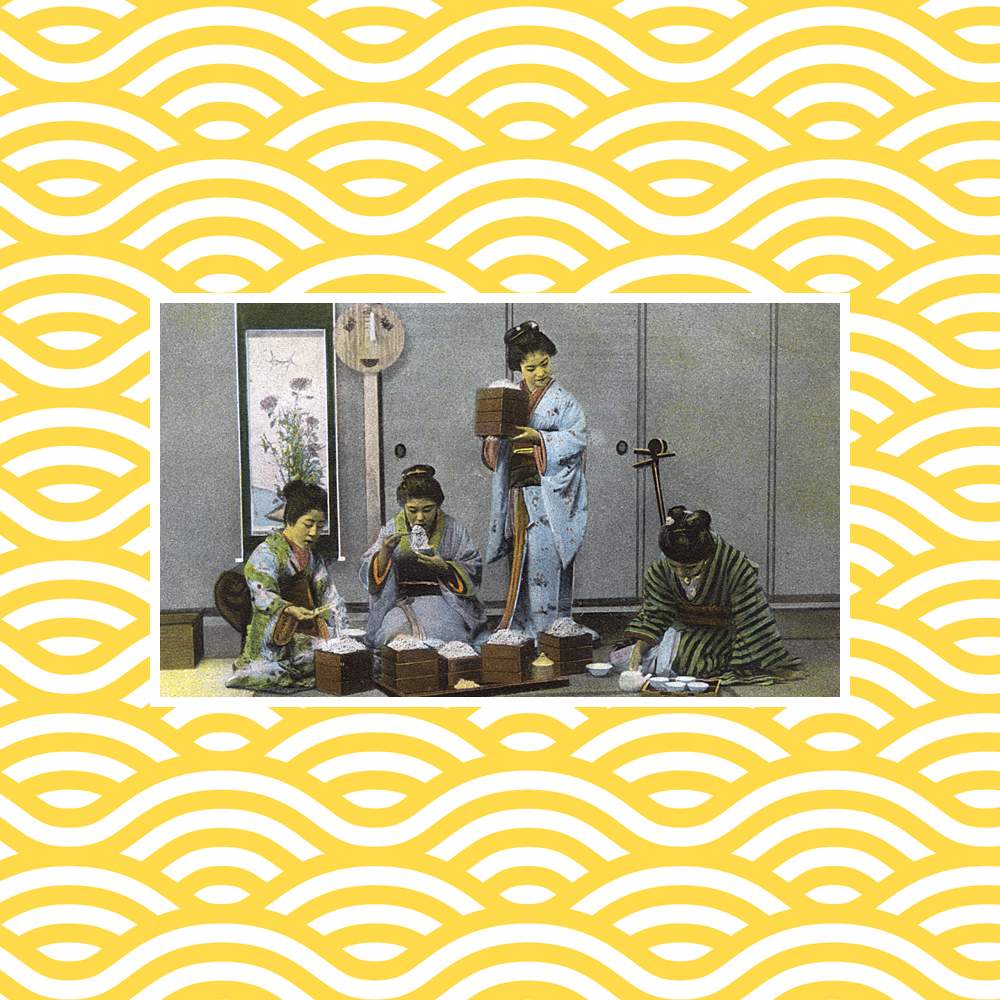
Japanese women eating noodles circa 1905
Traditional ramen noodles are, in their most basic form, wheat noodles served in a soupy broth with some slices of meat or tofu on top. Over the decades, that simple recipe has been adapted and expanded over and over again, giving imaginative chefs the ability to show off their skills by making complex broths, perfectly textured noodles and an ever-expanding variety of toppings.
The original ramen was eaten by Japanese labourers by the bowlful. World War Two changed everything. Large tracts of Japan were decimated by bombing. When the war came to a close in 1945, the surviving population was starving.
Enter our unlikely hero - a failed businessman named Momofuku Ando. Ando, as he’s affectionately known, had earned and lost fortunes, first in his native Taiwan and then in Japan. He made millions in industrial parts during the war, then lost it. At one point, he went to prison for fraud. He then headed a bank, which collapsed. But Ando was persistent. He wanted to rebuild his reputation and his fortune. A decade after the war had ended, contacts in Japan’s ministry of agriculture told him they were eager to figure out how to push Japanese people to eat more American wheat flour - the key component of US aid at the time.
That’s when, so the story goes, Ando remembered something he’d seen at the end of the war - queues of exhausted people waiting patiently in long lines for bowls of steaming ramen noodle soup. What was needed, Ando thought, was a modern, speedy version of that working-class comfort food. A food that, conveniently, used lots of American wheat flour.
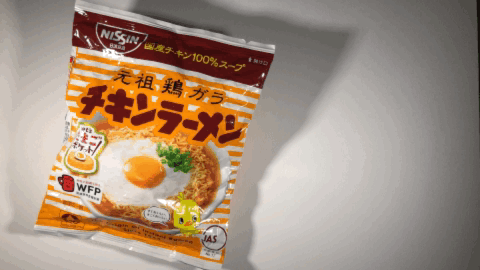
Instant Chikin noodles - an egg is optional
And so, at the age of 48, Ando transformed himself into a food inventor. He disappeared into a wooden shed in his back garden every day for a year. When he emerged, he’d invented a product that looks almost identical to rectangular bricks of instant noodles that are stacked on supermarket shelves around the world.
You can see faithful recreations of that shed if you visit Japan’s three - yes, three - instant noodle museums. The one we visited, in the coastal city of Yokohama, is the biggest and newest. It is owned by the food company Nissin, which was founded by Ando. The red, square block of a building is all clean, straight lines. Inside there are shiny floorboards and pristine white walls - it looks like a modern art museum. Apparently, it’s a hot place for first dates.
Visitors are quickly led into the “instant noodle history cube”, a brightly lit room lined with thousands of instant noodle products, starting with Ando’s original block of Chikin Ramen. At the end, there are even luxury instant noodles - in convenience stores in Japan, you can buy noodles from famous Michelin-starred ramen shops.

Cup Noodle Museum, Yokahama
In between the two extremes sit some of the thousands of instant noodles on sale across the globe. The cube is a mind-boggling showcase of what food inventors can do. Instant noodles were born in Japan, but marketers go to pains to make them seem local, wherever they're eaten. Some countries like the basil and olive flavour. Others prefer cheesy curry or creamy seafood. In Mexico, noodles are eaten with salsa and slices of lime.
Nissin's Kasura Suzuki beams as we examine the packaging.
“We launch over 300 products yearly,” she says, “just in Japan, for our company. But only 1% remain in the market. The products have a really short life cycle because consumers are always looking for something new. So we have to be very inventive.”
Most of the museum’s visitors are Japanese, but then Raquel Scott, a teacher from San Francisco, appears bubbling with enthusiasm.
“I grew up on cup noodles,” she says. “Especially in college, needing a cheap meal. So I thought it would be fun to come here. What other better food to have a museum for than the cup noodle?”
There is no obvious mention of environmental concerns - such as the styrofoam cup used for cup noodles - in the Yokohama museum.
To embrace the mindset of this museum, you’ll need to swallow any lingering doubts about the wonders of instant noodles and their contribution to human civilisation.
Kasura guides me to the last room in the museum. “Here we have Space Ramen, which is the final invention that our founder Momofuku Ando created,” she explains. “This product was developed especially for astronauts to eat during space travel.”
I hesitate, but she doesn’t blink. You’re saying that at the age of 95, Momofuku Ando was responsible for this invention?
“Yes,” comes her immediate response. “He wanted to go beyond the atmosphere and take his invention to outer space.”
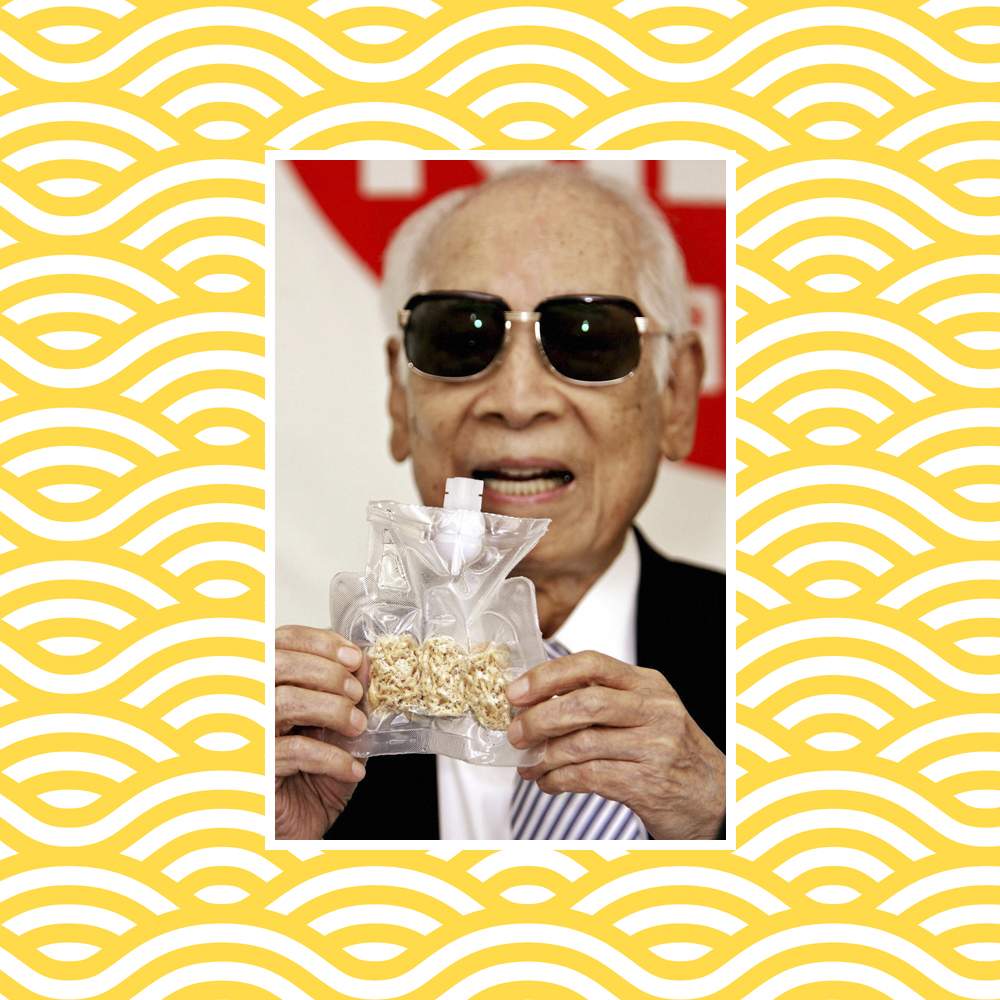
Momofuku Ando and his instant noodles for astronauts
The museum staff and its visitors ooze a sense of national pride. Ando was actually born in Taiwan, but it was in Japan that his invention came to life. Instant noodles came along at a turning point in Japan’s history, accompanying its rise from a struggling nation to a modern economic powerhouse.
They came of age when Japanese households were filling up with new home appliances, such as kettles. Television commercials from that age showed the effervescent commercials promoting convenient new foods. Today, a whole culture of appreciation has grown around instant noodles in Japan.
At the heart of the movement sits a shy, unassuming man named Toshio Yamamoto. He’s better known to his fans as Ton Tan Tin – a name he gave himself because he liked the sound of it. He’s the world’s most prolific instant (ramen) noodle reviewer.
“Oh I love instant ramen very much,” he smiles. “I’ve been eating ramen since I was 10 years old. I’m pretty much made of ramen.”
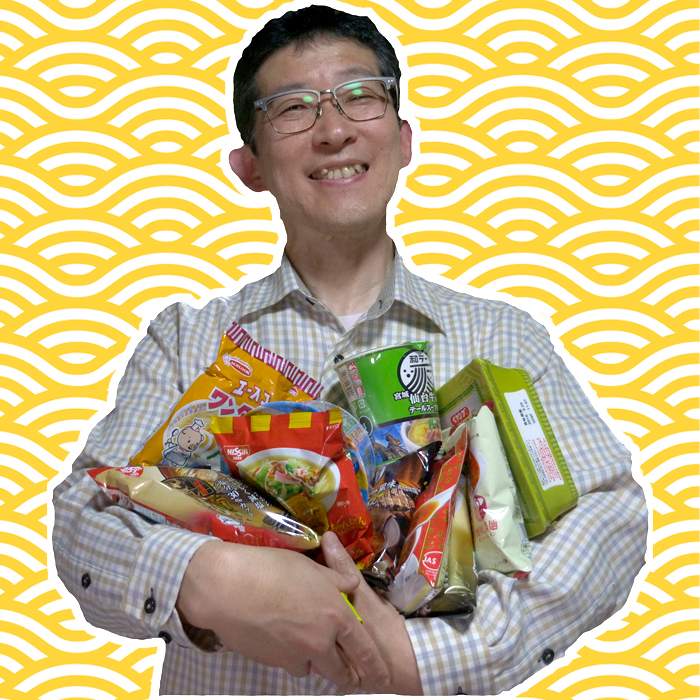
Toshio Yamamoto holding a few examples from his noodle collection
Yamamoto once worked as an engineer, but his noodle reviews became so popular that he was able to quit and devote himself to testing instant ramen. Companies send him their newest offerings for testing and followers send him boxes of instant noodles from overseas. He’s reviewed more than 6,200 kinds of instant noodles.
You can check out Ton Tan Tin online. Each video is almost identical - you see the package of the product he’s going to review, you watch it being prepared, and then you watch the noodles’ score out of five. The entire process is oddly mesmerising.
But you’ll never actually see Ton Tan Tin on screen - just his hands. In person, he’s a slightly awkward man. He shuffles around his suburban house in Japanese slippers.
“I haven’t found ramen that’s five stars yet. I’m still on the journey to find that,” he explains. “The noodles will need to be perfect. The soup will need to have great quality and the condiments perfectly balanced, with a nice harmony.”
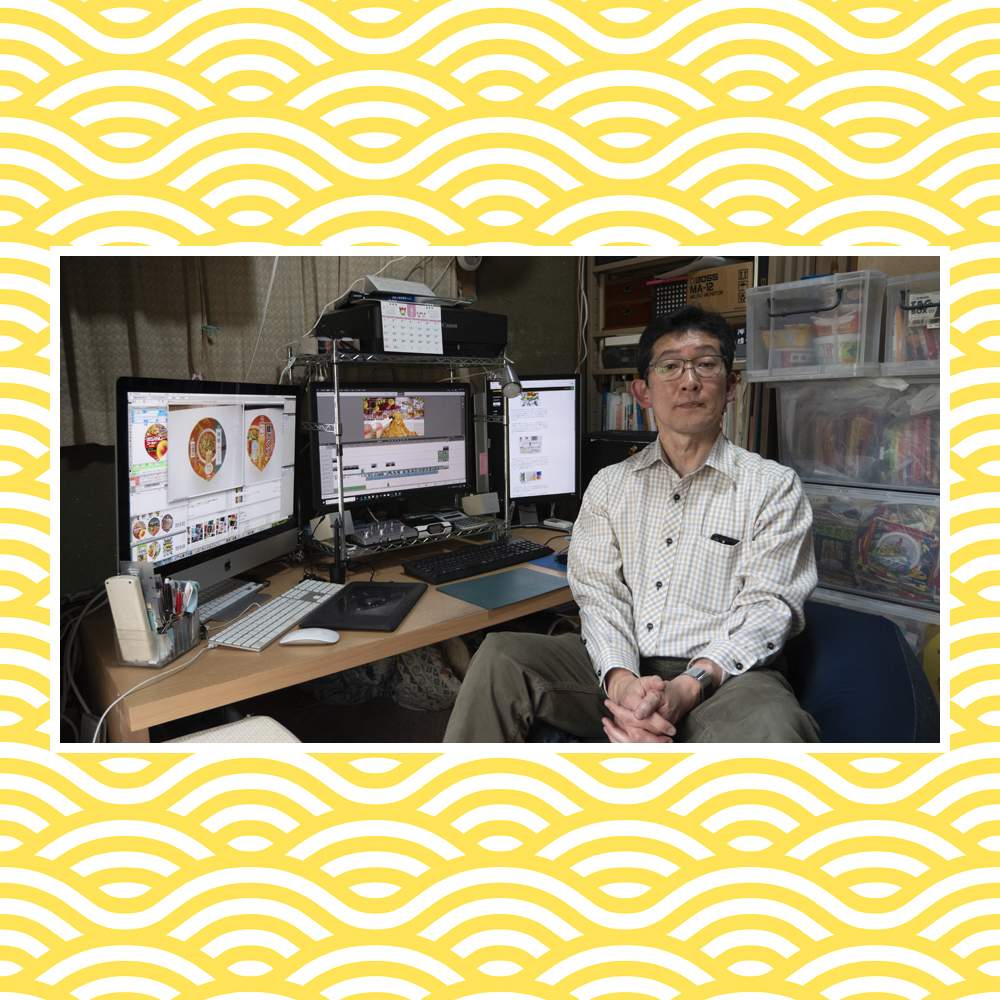
On a large computer screen, he begins to click through all of his reviews. Most scores hover around three out of five. Suddenly, a shockingly low score pops up - a 0.1 out of five stars.
“Those noodles were really thick and ‘guagua’,” he says. “It was a really bad texture in my mouth. And the soup is really thick. It’s a very kind of artificial flavour. And the condiments you chew but they just keep staying in your mouth. They were very difficult to swallow.”
The product in question? One of the UK’s top sellers - Cup Noodle Chicken and Mushroom flavour. Millions of British university students survive on this, I tell him.
I also tell him I would like to be here on the day that he eats that perfect five. I’d love to see the look on his face. He smiles and closes his eyes a little bit, as if imagining what those noodles would taste like.
“I would share my happiness with everybody,” he sighs.
If Japan is the county that gave birth to the instant noodle, China’s the country where it came of age. Out of the 100 billion servings of instant noodles consumed last year, 38 billion were eaten in mainland China.
But in China, there’s none of the romance that's associated with instant noodles in Japan - there are no museums dedicated to them here. Ton Tan Tin would be shocked.
Inside a bustling railway station in central Beijing, travellers are preparing for long journeys ahead. In a cavernous waiting room, weary-looking people are clutching thin plastic bags, mostly holding a few containers of instant noodles.

“It’s garbage food,” complains one young woman. She’s eating a pot as she waits to board her train. “Everybody knows it’s bad for your health. I don’t like eating it, it’s simply for convenience.”
In the centre of the train, tucked into a cosy compartment, we meet Huan Zhuo Ming and Wang Li, a friendly couple in their
50s. It’ll be three in the morning when they reach their hometown. They are visiting their elderly parents for China’s tomb-sweeping public holiday. The train has just left the station and Huan Zhuo Ming is already tucking into his supper.
“There’s nothing else to eat. Of course, it's instant noodles,” Wang Li patiently explains as her husband enjoys the spicy beef flavour - a favourite in China.
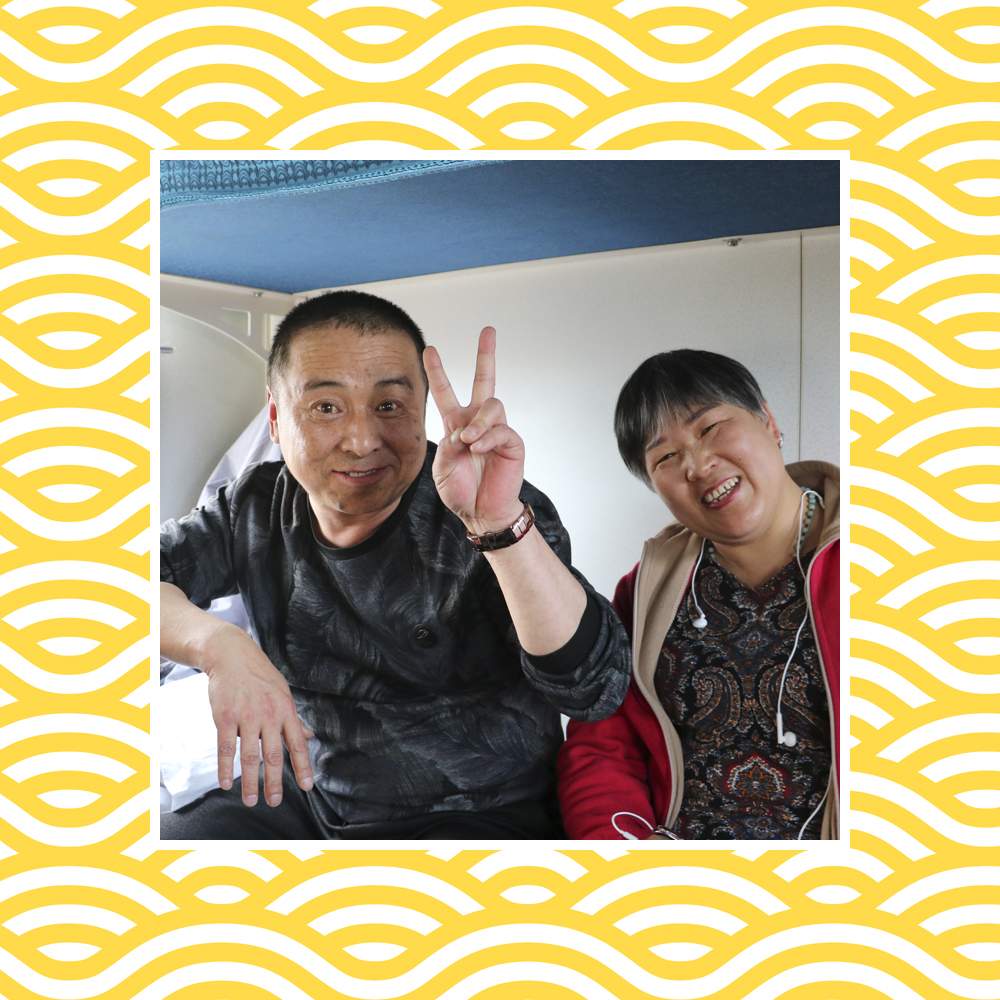
Huan Zhuo Ming and Wang Li
A convenient hot water tap sits at the end of every train carriage, and a queue of like-minded folk are filling up their cup noodles as we chat.
Huan Zhuo Ming is a security guard in Beijing and Wang Li works as a cleaner. They’ve been married for decades but they don’t live together anymore. Instead, they each stay in dormitories provided by their employers. Their daughter, who’s a nurse, lives in a third dormitory. Three family members, all scattered across the city. But, when asked about their living conditions, they shrug. They don’t question their scattered existence.
It’s passengers like these who’ve helped make China richer. They’re migrant workers who left their homes in the countryside to work in the country’s factories and major cities. China’s astonishing economic growth clocked 9.5% a year for three decades, the World Bank says. It’s the fastest growth in economic history - but it’s also growth that hinged on the makeshift lifestyle of migrant workers and the sacrifices they’ve endured.
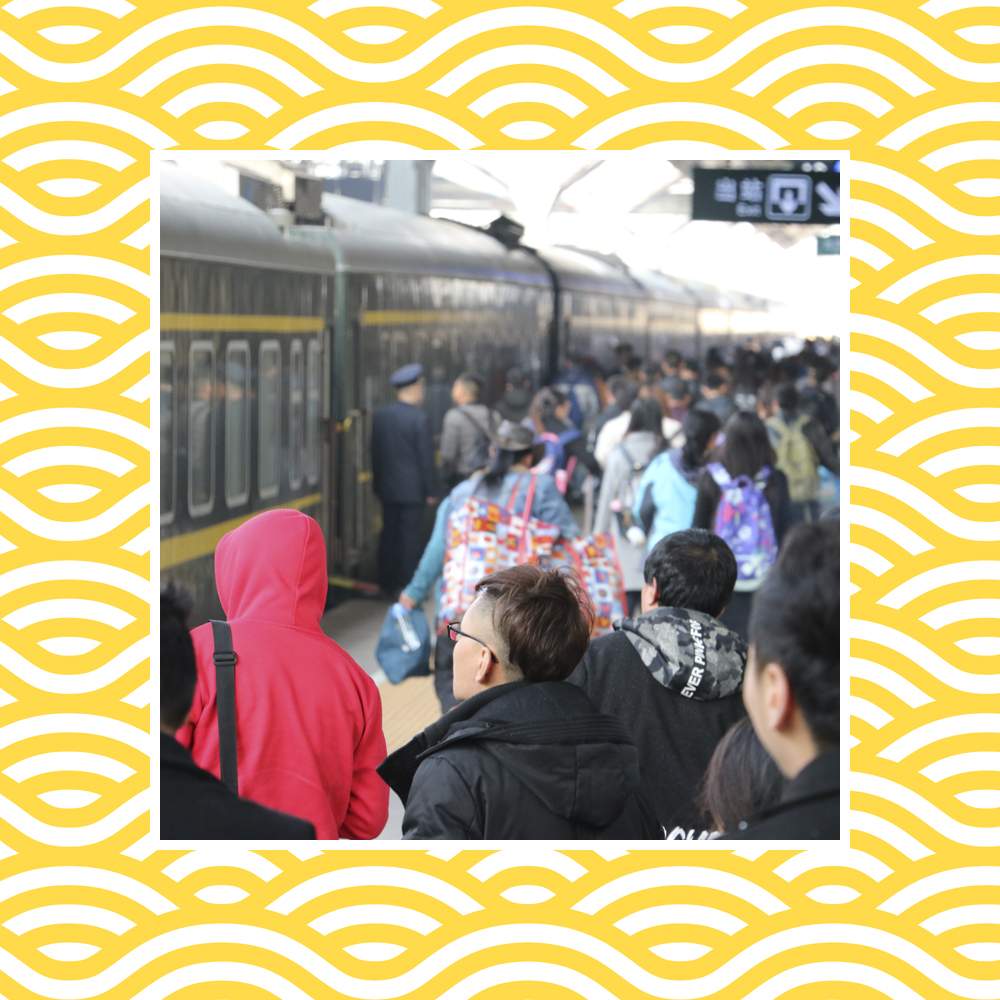
Imagine you’re a bottom-of-the-ladder worker in China, sleeping in a dormitory bunk bed every night and eating canteen food every day. What do you eat if you want a filling snack? Instant noodles filled that gap.
But the instant noodle lifestyle is becoming a thing of the past. Sales peaked at more than 50 billion servings a year in 2010 - just after the Chinese economy clocked record gains. But instant noodle sales have been dropping every year since - down 16% last year, alone.
“Every food is a product of its own time,” says Professor Meng Suhe. She’s the grande dame of the noodle industry. Behind a pair of thick glasses, she’s witnessed the arc in noodle consumption and how it followed China’s own path over the past 40 years. “Each rise and drop in instant noodle sales has reflected distinct times in China’s modern history,” she says.

Professor Meng Suhe
The government’s numbers show that half of workers lived in dormitories in 2011. Five years later, only 13% of factory workers did so. Sixty percent had moved into rented housing - places with kitchens allowing them to cook what they want, so there’s less need for instant noodles.
Now, China’s workers are starting to reject noodles as they crave their mum’s cooking, Professor Meng says. “Also, Chinese people are starting to crave less processed food.”
But noodle makers shouldn’t pack up yet. Lots of millennials haven’t learned how to cook, sighs Professor Meng, and they’re dependent on convenience foods and deliveries.
Coss Marte strides through the streets of New York’s Lower East Side with total confidence.
“I used to sell drugs on this corner,” he says breezily as we walk across the street to a grocery store.
He grabs items off the shelves. Doritos, instant noodles - the processed food favourites he used to rely on in prison.
He pauses, staring at the packs of noodles. “This really is survival food in prison.”
Michael Gibson-Light has heard this many times before. He stumbled across the importance of instant noodles when he was researching prison jobs. His resulting research on instant noodles made headlines when it emerged last year. He’s the one who declared something that US prisoners have known for ages - in the past few years, instant noodles have come to replace cigarettes as the most traded item in US prisons.
“It was totally taken for granted by the prisoner population,” he says. “I was surprised since all you ever really see on TV and movies, or read about in research about prisons is that cigarettes are the de facto currency.”
That’s notable because it’s such a huge population. The US has more known prisoners than any other country in the world 2.2 million at the last count. And the change - from cigarettes to instant noodles - boils down to money.
Prison budgets have been slashed and most prisons feed inmates the minimum number of calories per day. Many offer just two meals a day on weekends. Prison food has been the subject of recent state Supreme Court lawsuits, with prisoners arguing that prison food is inedible.
“So, the food is even worse and there’s less of it,” Gibson-Light explains. “If you’re in prison and you want or need more food than you can get from the chow line, then you have to buy it yourself. The costs of nutrition have shifted to the prisoners themselves. Instant noodles are a go-to because they're cheap.”
But it goes further. Noodles function as currency.
Over time, they became so valuable that people started using them to trade with. It didn't take long for them to essentially replace tobacco products as the new black market currency, explains former prisoner Chandra Bozelko.
“They’re easily stored and they’re non-perishable, so they can be kept for a very long time,” she says.

Noodles have replaced cigarettes as the most traded item in US prisons
Chandra served six years in prison in Connecticut for identity theft. The press called her the “Connecticut Princess” - an Ivy League graduate who was convicted of stealing credit card information and forging signatures to buy thousands of dollars worth of goods online. Now she’s out, and part of her case is on appeal, she writes about prison life, including why instant noodles are so valuable on the inside.
“You might have a certain book from the outside that I want to read. You might say, ‘I’ll give you 10 soups - 10 packages of ramen noodles - in exchange for that book,’ or to even borrow that book. I’m sure it’s been used for payment for sexual acts.”
Noodles can ease social interactions inside a prison, Chandra says.
“It can be used as a gratuity. So a lot of times there’s a laundry worker who washes people’s clothes, and even though you’re not required to do that, they might hand over a package of noodles when the laundry worker gives an inmate back her clothes, when they’re folded and dried.”
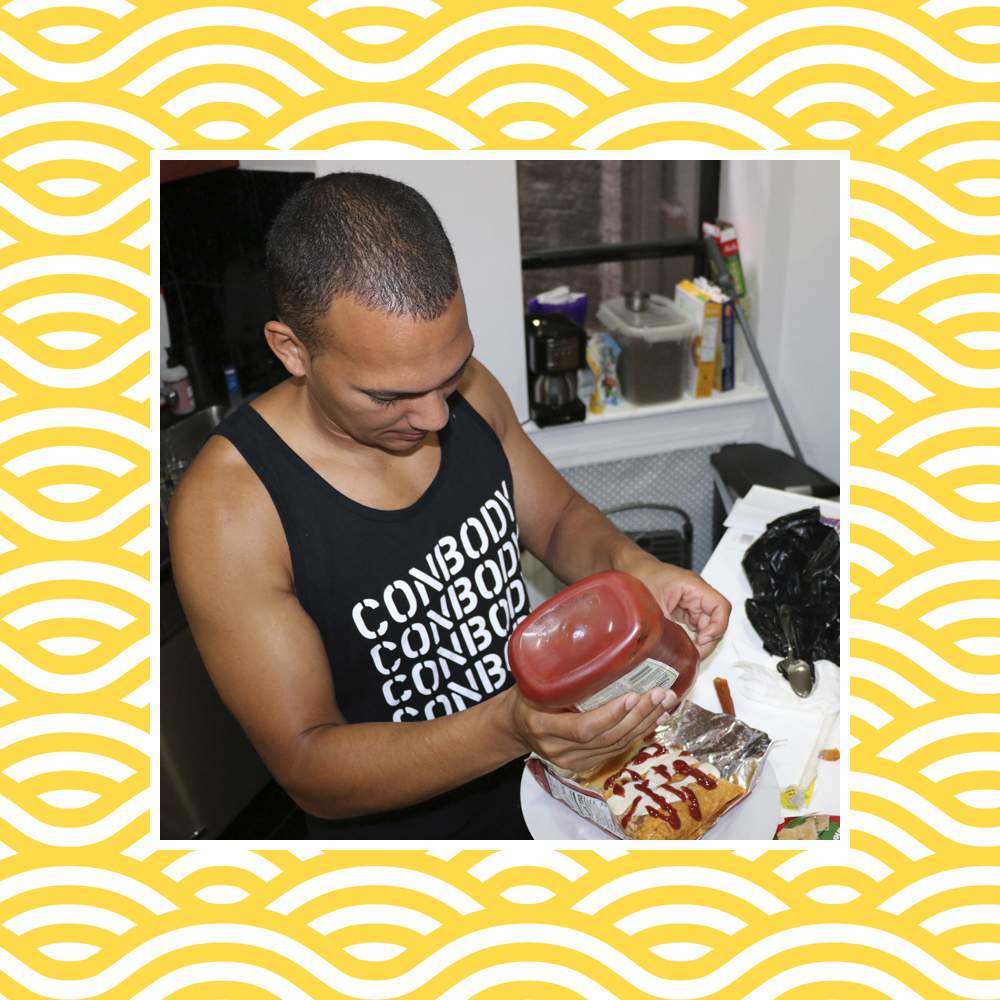
Coss Marte preparing a 'prison burrito'
It’s the same story for the men. Coss Marte says things can get violent when instant noodle debts aren’t repaid.
“There are all types of hustling inside the system. People juggle. Juggle means you get, like, a 200% mark-up. If you give someone two ramen noodle soups, you get four [more] ramen noodle soups back within a week.
“I've seen people get cut and stabbed for ramen noodle. And it’s not about the 30 cents it’s worth. It’s about the principle. It’s currency in the system.”
Edible currency, that is. Chandra says she’ll never eat instant noodles again, but for Coss Marte, it’s a different story.
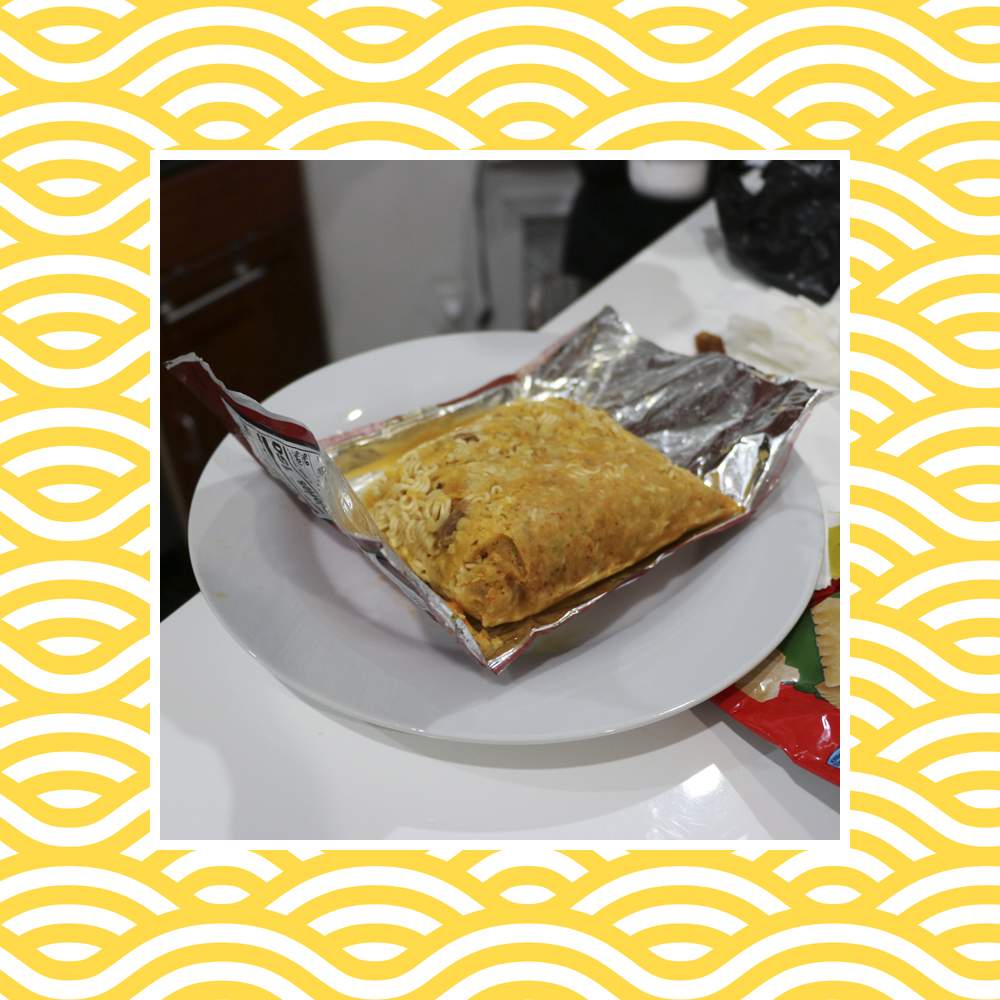
He serves up his prison burrito and I give it a try. Warm and starchy, it’s full of flavour. Synthetic flavour - fake cheese and ketchup, mostly - but it’s easy to see why this would pass as comfort food inside a prison. In fact, prisoners turn noodles into all sorts of things, from tortillas to pizza bases.
“I’ll make this once a year,” he explains, after eating a forkful of the burrito. “Maybe I’m watching a prison show or something and it’s like, ugh, memories.”
Burritos are mostly off the menu because Coss is in shape now. He’s come a long way from prison, and runs his own gym.
“I was eating all this junk food every day,” he says, gesturing towards the instant noodles. “The doctors told me my cholesterol levels were so bad I could die of a heart attack in five years. I was sentenced to seven years. That motivated me.”
On his self-assigned exercise regime, he lost 70lb in just a few months. He didn’t want to die in prison, he explains.

Coss Marte runs a prison-themed workout gym
“The [prison] cemetery doesn’t say your name, just a number. I didn’t want to die in the system. I’ve seen people die in there. It’s pretty sad. Most of the time family don’t show up.”
There’s now a big push to make the food served in prisons healthier.
And globally, the trend’s the same. Noodle makers in China and Japan told us that they’re under pressure from consumers to overhaul their products, to subtract salt and add nutrients.
But what happens if you eat only instant noodles? What would it do to your body?
Kieran “Danger” Dooley can tell us - he’s the person who forced himself to exist only on noodles for a month as part of a student film project. After 30 days, Danger lost 11kg. Normally an easy-going guy, he experienced unusual mood swings. “I would go up and down, up and down. I wouldn’t say depression. It was more of a meh! I just couldn’t be bothered,” he explains.
“I couldn’t be bothered making the noodles. I’d just stare at them for 10 minutes and think, 'Why the hell did I do this?’”
Danger made it through the month, with one sneaky trip to a pub to drink three pints of beer.
The silver lining was that he won the top prize in his university documentary competition. And what did a month of eating square packets of noodles teach him?
“Man can’t live on noodles alone. Well, they probably could but it wouldn’t be an existence worth living.”
Tell that to those who still revere Momofuku Ando. In the instant noodle museum in Yokohama, there’s a cardboard cut-out of him.
He is surrounded by, and equated with, famous historical figures - Marie Curie, Beethoven, Galileo, Einstein. But does the creator of instant noodles deserve a place of honour among the world’s greatest figures?
Here’s one thing we can say - instant noodles are the world’s true convenience food, the hot food that’s always waiting there, in the background, for those who are short on money or time.
As long as there are people living in dormitories, or shopping in convenience stores, or concocting meals in prisons - the instant noodle will live on.

